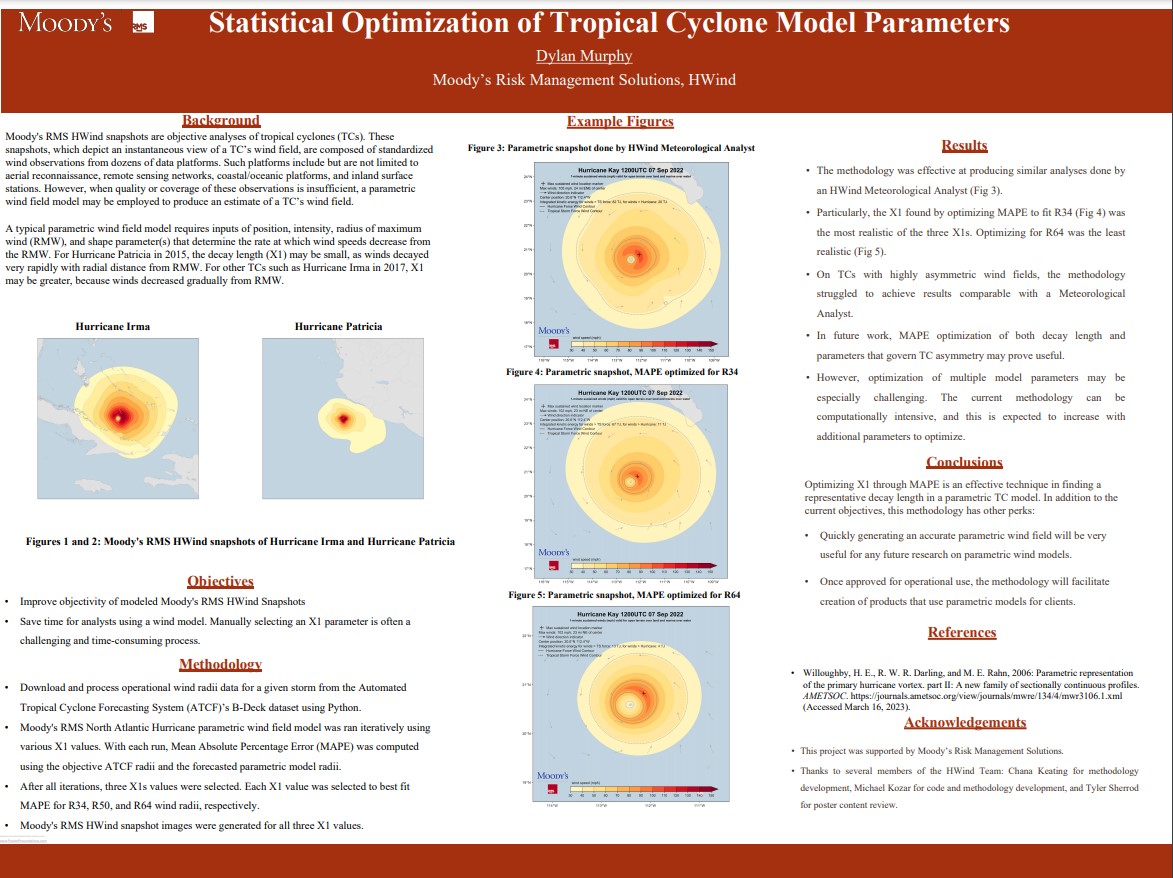Research Symposium
23rd annual Undergraduate Research Symposium, April 6, 2023
Dylan Murphy Poster Session 3: 2:45 pm - 3:45 pm/ Poster #83

BIO
I am a third year meteorology major from Tallahassee. My research interests include tropical cyclone modeling and machine learning applications to tropical cyclone and severe weather forecasting.
Statistical Optimization of Tropical Cyclone Model Parameters
Authors: Dylan Murphy, Tyler SherrodStudent Major: Meteorology
Mentor: Tyler Sherrod
Mentor's Department: Moody's RMS- HWind Mentor's College: External Organization (Moody's Risk Management Solutions) Co-Presenters:
Abstract
RMS HWind snapshots are objective analyses of tropical cyclones (TCs). These instantaneous snapshots of TC wind fields are composed of standardized wind observations from many data platforms. Such platforms include but are not limited to aerial reconnaissance, remote sensing networks, coastal/oceanic platforms, and inland surface stations. However, when quality or coverage of these observations is insufficient, a parametric wind field model may be employed to produce a TC analysis. A typical parametric wind field model includes a decay length (X1) that determines how fast wind speeds decay from the radius of maximum winds (RMAX). For Hurricane Patricia in 2015, X1 may be small, as winds decayed rapidly with radial distance from RMAX. For other TCs such as Hurricane Irma in 2017, X1 may be higher, because winds decreased gradually from RMAX. Finding an appropriate X1 value for a TC is often a challenging and time-consuming process. Statistical optimization can be utilized to find a suitable X1 objectively that captures the appropriate wind radii. This methodology can improve the objectivity of RMS HWind Snapshots that utilize a wind field model. Public data on the TC’s wind radii are provided through the Automated Tropical Cyclone Forecasting System (ATCF). These radii were optimized with Mean Absolute Percentage Error (MAPE) as an error metric. Initial findings are promising, as the methodology can find an X1 with similar skill to that of an HWind Meteorological Analyst. The methodology is currently for internal use but may be employed in operational HWind product generation in the future.
Keywords: statistical meteorology, tropical cyclones, hurricanes, tropical meteorology


